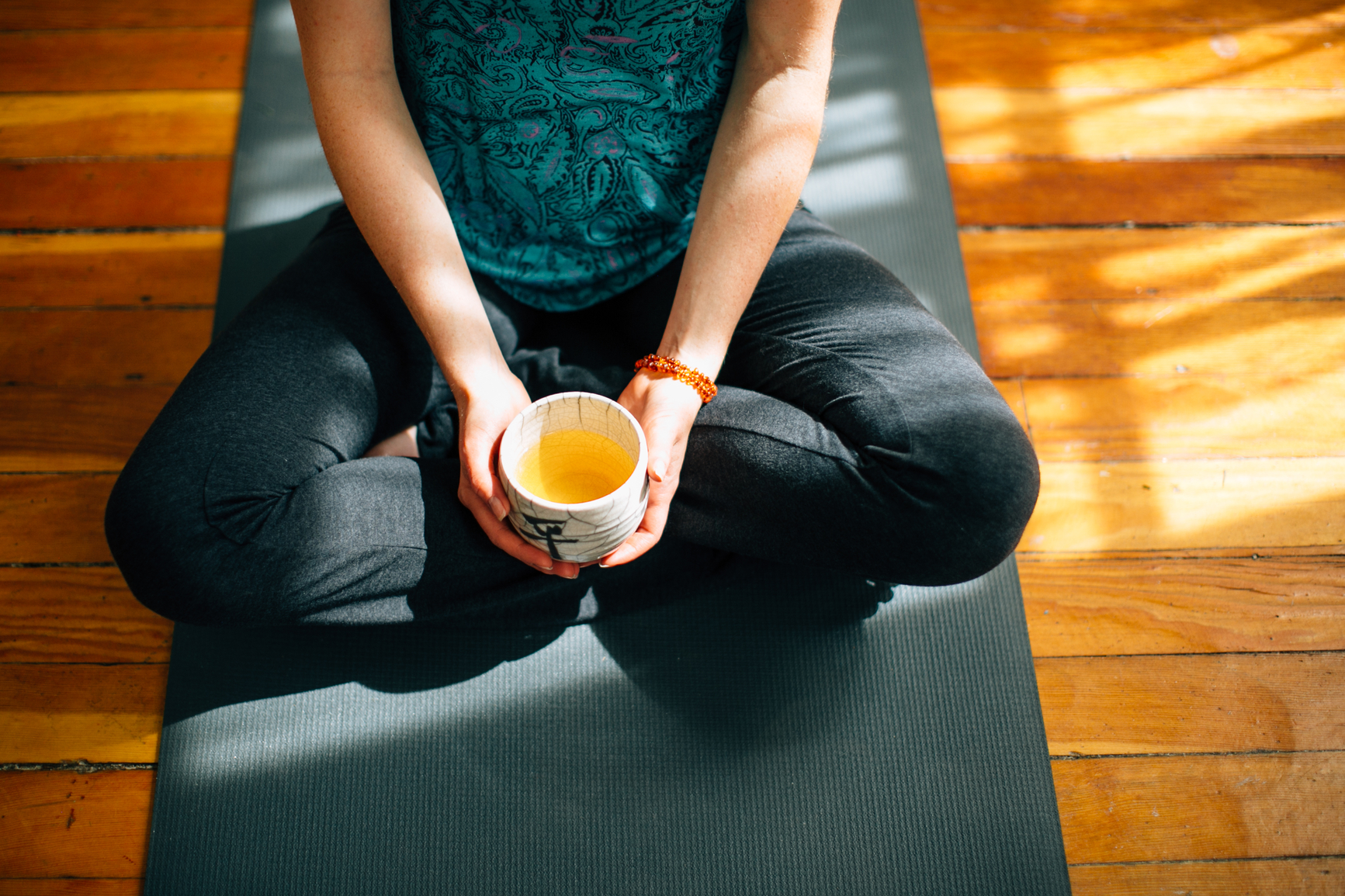Have you fallen into a rut with your yoga practice? Are you practicing the same poses, or following the same online classes over and over again? Do you roll out your yoga mat, move through your sun salutations then wonder what to do next? Do you want to deepen your practice? Here are some tips to help you to do just that, and it’s not what you might think!

1. Mindful breathing
Start your practice by connecting with your breath, and spend at least 5 minutes here. Breathe more slowing and deeply, notice your thoughts, how your body feels, tune into you, what do you feel you need from your practice today?
By giving more focus to your breath, you deepen your yoga practice, releasing tension, allowing you to connect to your intuitive self.
Often we turn up to our yoga mat with a head overflowing with the day’s events, conversations that took place and general over analysis. From this state the head leads your yoga practice, which limits the experience and benefits that yoga has to offer. By connecting more deeply with your breath you gradually disconnect momentarily from mental chatter, you can feel your way through your practice, witness the experience, observe your thoughts, noticing the moments of stillness between thoughts. This gives you a different perspective on everything you brought to the mat.
By breathing deeply we stimulate the relaxation response enabling the parasympathetic system to take over so the mind and body can fully relax.
You can focus on breathing slowing and deeply through the nose, drawing the breath down into the abdomen, then filling yourself up with the breath. When you reach the end of the inhale, see if you can inhale some more. Feeling stressed? Then exhale out through the mouth, releasing tension or exhale slowly out through the nose.
Alternatively, try counting your breath making the inhale and exhale equal lengths, bringing balance to your nervous system.
Another option is the Ujjayi breath ~ victorious breath, breathing with sound. This gives a point of focus and helps to calm a busy mind. Think of the sound of the ocean, or the sound your body makes as you drift off to sleep at night and as you breathe focus on making this sound by drawing the breath into the base of the throat. As you move through your practice observe any fluctuations in the breath, can you keep it slow and steady throughout? Does a stronger pose require a stronger breath?

2. Journal
What did you bring with you to your mat today ~ not in the literal sense, but mentally, emotionally? How do you feel as you tune into your breath before beginning the asana (poses) practice? How do you feel after savasana (relaxation)? Note down thoughts ideas, feelings, anything that comes to mind. As thoughts or ideas flutter through your mind during the practice, pause to make a note of them. I have some of my most revealing insights and captured some great ideas by doing this.
Journaling encourages you to observe what comes up for you during your yoga practice. Sometimes strong emotions rise up, out and away during your time on your mat. If you can capture them on paper as they arise, then perhaps you can make sense of it all, or it may lead to insights about other aspects of your life.
You may want to journal before and after your practice so you don’t interrupt the flow, or you may want to journal freely, writing down anything and everything that comes to mind. You can note down your observations from the breathing practice above. Or you may want to use some journalling prompts, here are some examples:
- If my body could talk, what would it say?
- What sensations do I notice in my body?
- …… emotions came up during my practice today.
- I am happiest when…..
- I feel inspired when….
- I’m grateful for…
- What I’m loving right now ….
- Describe your ideal life
- What am I resisting in my life?
- How can I be kind to myself today?
- What do I enjoy doing and how can I do more of it?
- Write the words I need to hear?
- What brings tears to your eyes?
- I really don’t want to write / think about ….

3. Meditate
Make meditation part of your regular practice to bring more mindfulness into your day.
Meditation opens us up to receiving, creating space by continuing to observe ourselves. By directing your attention to your breath or a mantra supports you by disconnecting from the mental chatter. This free’s up energy by letting go, however briefly of thoughts that drain you and lead to worry or stress.
Sit at the end of your yoga practice, set a timer for 5 mins or longer if you have a meditation practice already and focus on your breath, noticing how the breath feels as it enters and leaves your body, where does it travel to? Mantra’s help to calm a busy mind, gradually moving thoughts into the background, some examples are:
- So Hum (I am that) repeating So on the inhale and Hum on the exhale.
- Let Go.
- Slow Down
- Sat Nam (Truth is my name)

Incorporating these three steps into your yoga practice encourages you to move your awareness to your heart, operating in the world from that space rather than the mental space we usually reside in. They will gently guide you to follow your feelings, to honor who you are and accept your unique gifts, talents and place in the world. Keep practicing in this way and notice how your intuition grows stronger, you feel more centred, calm and less reactive to the daily ups and downs that are life.
I’d love to hear your experiences, let me know if these suggestions work for you or not and maybe share some of your own in the comments below.



